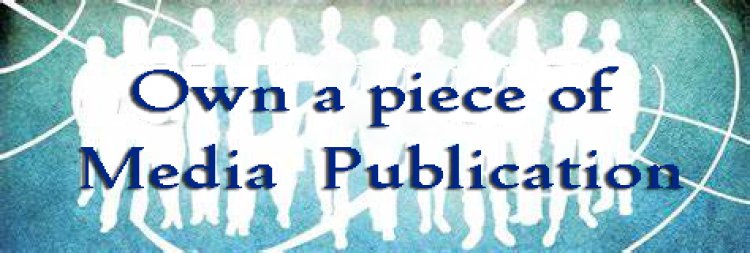Act now to ensure health policies address the burgeoning demands of Myopia
One of the world’s leading vision impairments, myopia’s prevalence is set to increase, with vast implications for country’s budgets and their people’s health and well-being.

Myopia – also known as short-sightedness – is a major global health concern and one of the leading causes of vision impairment,1 with prevalence rates rapidly increasing.2 In the single decade from 2010–2020, myopia prevalence increased by 20% from baseline.3 By 2030, the World Health Organization (WHO) predicts that 40% of the global population will live with this eye condition.4
Children are developing this life-limiting condition at increasingly younger ages.4 As children grow up with myopia, it has wide-reaching impacts on themselves, their communities and healthcare systems: children feel inadequate and misunderstood, their development and ability to do well at school are negatively impacted, and the risk of permanent blindness increases from complications as the visual impairment worsens into high myopia.5,6 What’s more, parental awareness fails to see these potential impacts: just 46% of parents consider myopia to present a health risk to their children.7
As children grow up with myopia, it has wide-reaching impacts on themselves, their communities and healthcare systems
In 2019, the global economic burden of myopia was estimated at $358.7 billion, including examinations, lenses, surgery and managing its complications.3 This will continue to increase as the number of affected individuals grows and life expectancy rises. By 2050, the direct cost of myopia is projected to be $870 billion globally. 3 We must come together to put more resources behind vision health, driving governments and key stakeholders to act now, as the human and economic costs of deprioritizing myopia are too significant to ignore.
By 2050, the direct cost of myopia is projected to be $870 billion globally
The WHO has spotlighted the urgency of global policy review to ensure the needs of children with myopia are met with the launch of the SPECS 2030 initiative, aiming to tackle the main causes of vision impairment through developing advocacy, raising awareness, and strengthening refractive error services.8 This includes prioritizing regular eye screenings, increasing education about preventative measures and solutions available, and improving understanding and awareness of myopia symptoms, signs and risk factors.
Innovation is critical to closing the vision care gap
Technological innovations such as HOYA Vision Care’s leading myopia control MiYOSMART* spectacle lenses can slow the progression of myopia in addition to correcting vision, lessening the impact of myopia on children.9 At clinical trial, MiYOSMART slowed myopia progression by 52% and eye elongation by 62% on average, sustained over time10 – even completely halting progression in some children.9,11
Griff Altmann, Chief Technology Officer of HOYA Vision Care, expressed that: “HOYA has continued to innovate by developing the world’s first photochromic myopia control spectacle lens and myopia control polarized sunglass lens. Expanding our innovative technologies, we are working to increase the range of powers offered to help a wider range of patients, and on next-generation spectacle lenses with even greater effectiveness. To even further enhance effectiveness and meet each patient’s lifestyle needs, we are also investigating combined systems of myopia control, such as MiYOSMART in combination with atropine.”
Developing these innovations only partially contributes to better outcomes for children with myopia; their needs must be met as soon as possible. “The risk of developing high myopia can be addressed when the child is pre-myopic,” explained Altmann. “If the natural amount of hyperopic refractive error in a child’s eye is less than it should be at a young age and if they have a family history of myopia, that child is at risk of developing progressive high myopia. HOYA is investigating treating these at-risk children before myopia sets in.”
At HOYA Vision Care, we are committed to overcoming this problem through innovation and collaboration – for improved awareness and understanding, access to vision care, and global prioritization of vision-forward health policies. By working together, we can allow children to lead fuller and more inclusive lives, ensuring a vision-forward future for all.
By working together, we can allow children to lead fuller and more inclusive lives, ensuring a vision-forward future for all
EXPERT INSIGHT
Professor Dominique Bremond-Gignac, Professor of Ophthalmology at University Hospital Necker-Enfants Malades and Paris Cité University, France, stated that: “Without adequate prioritization of vision health in policy development to ensure education around myopia, caregivers and teachers are poorly equipped to recognize its signs or take such timely action – preventing children’s access to treatment.”12
Reinforcing the importance of taking urgent action for children with myopia, Professor Bremond-Gignac expressed that: “Adult visual handicap is expensive – so we need to focus on prevention and reducing progression in children. In France, we have a large national annual campaign to inform parents about myopia and its treatments to address the educational need. Governments must do more for our children in policy development by enforcing vision-friendly behaviors, such as mandatory reduction of screen time as seen in China and increasing time spent outdoors; professional organizations such as the World Society of Paediatric Ophthalmology & Strabismus can help guide these policies.”13
Through collaboration between industry and health authorities, the vision care needs of more children can be met. “Our healthcare systems can do more by reimbursing myopia control solutions, and industry must continue to innovate to meet the vision care needs of all children,” said Professor Bremond-Gignac. “The French Ministry of Health has recognized MiYOSMART not only as corrective spectacles but as a treatment for controlling myopia, and it has the longest-running clinical data of any spectacle lens for myopia management.14 We are waiting for a special price of reimbursement of MiYOSMART for children who can benefit from this technology.”
MiYOSMART spectacle lenses have not been approved for use in the management of myopia in all countries, including the US, and are not currently available for sale in all countries, including the US.
References
1. Chua, S.Y.L., Foster, P. J. (2020). The Economic and Societal Impact of Myopia and High Myopia. In: Ang, M, Wong, T. (eds) Updates on Myopia. Springer, Singapore. https://doi.org/10.1007.978-981-13-8491-2_3 2. Tomiyama, E., Myopia: An epidemic of global proportions, Available at https://www.optometrytimes.com/view/myopia-an-epidemic-of-global-proportions (2023). Accessed: September 2024. 3. Sankaridurg, P., et al., IMI Impact of Myopia. IOVS. 2021;62:2. 4. World Economic Forum, Why short-sightedness is on the rise and what can be done, Available at https://www.weforum.org/agenda/2022/11/short-sightedness-cases-rising-globally/ (2022). Accessed: September 2024. 5. Pirindhavellie, G.P., et al., The impact of spectacle correction on the well-being of children with vision impairment due to uncorrected refractive error: a systematic review. BMC Public Health. 2023;23:1575. 6. Haarman, A.E.G., et al., The Complications of Myopia: A Review and Meta-Analysis. IOVS. 2020;61:49. 7. McCrann, S., et al., Parental attitudes to myopia: a key agent of change for myopia control? Ophthalmic Physiol Opt. 2018;38:298–308. 8. World Health Organization, SPECS 2030, Available at https://www.who.int/initiatives/specs-2030 (2024). Accessed: September 2024. 9. Lam, C.S.Y., et al., Defocus Incorporated Multiple Segments (DIMS) spectacle lenses slow myopia progression: a 2-year randomised clinical trial. Br J Ophthalmol. 2020;104:363–8. 10. Lam, C.S.Y., et al., Long-term myopia control effect and safety in children wearing DIMS spectacle lenses for 6 years. Scientific Reports. 2023;13:5475. 11. Lam, C.S.Y., et al., Myopia control effect of defocus incorporated multiple segments (DIMS) spectacle lens in Chinese children: results of a 3-year follow-up study. Br J Ophthalmol. 2022:106;1110–4. 12. Robert, M.P., et al., Myopia: Insights from a population-based survey. Acta Ophthalmol. 2024:102;e869–70. 13. World Society of Paediatric Ophthalmology & Strabismus (2023), Myopia Consensus Statement 2023. WSPOS, Dublin. 14. Saw, J., Understanding the HOYA MiYOSMART spectacle lens performance, Available at https://www.myopiaprofile.com/articles/miyosmart-spectacle-performance (2023). Accessed: September 2024.





















